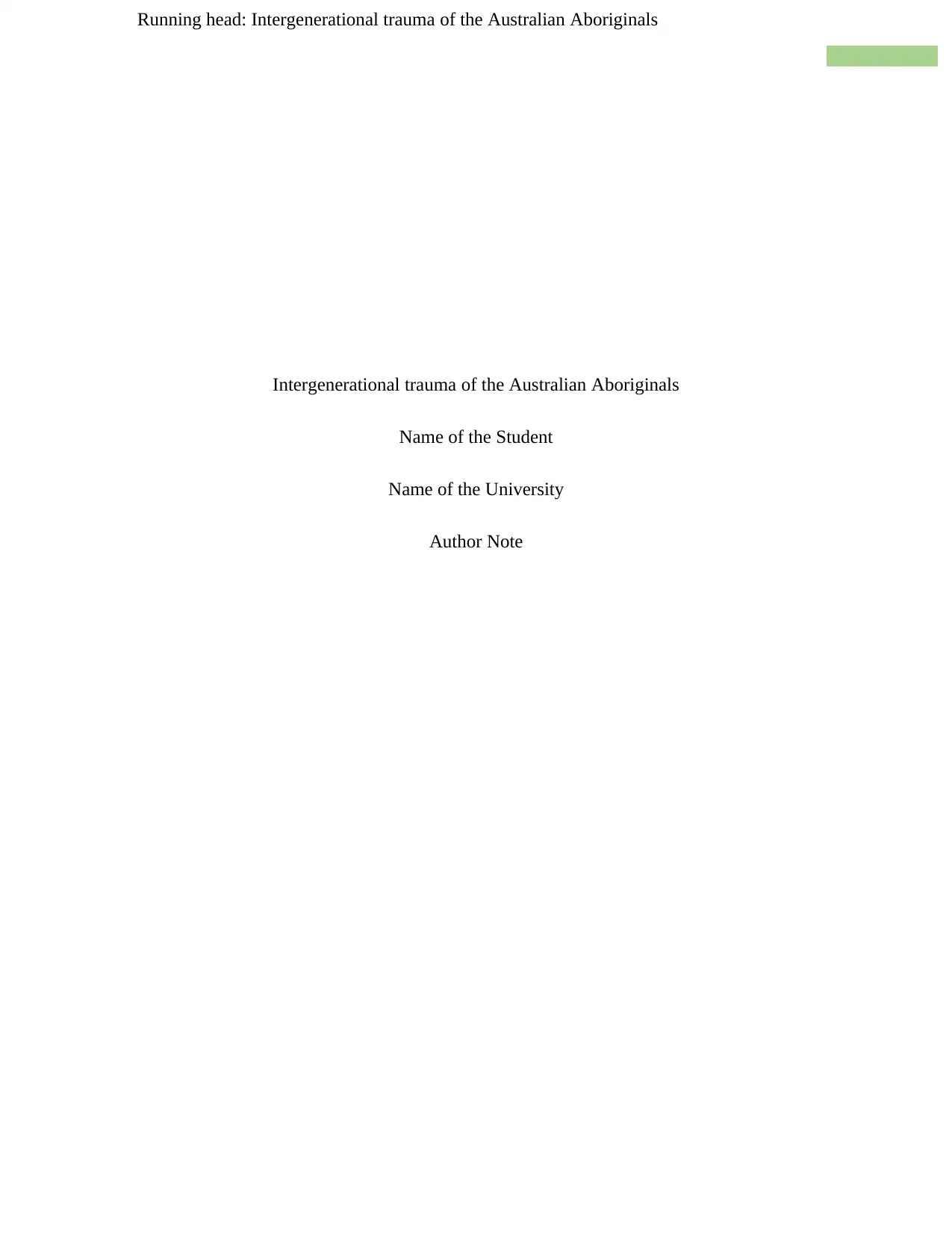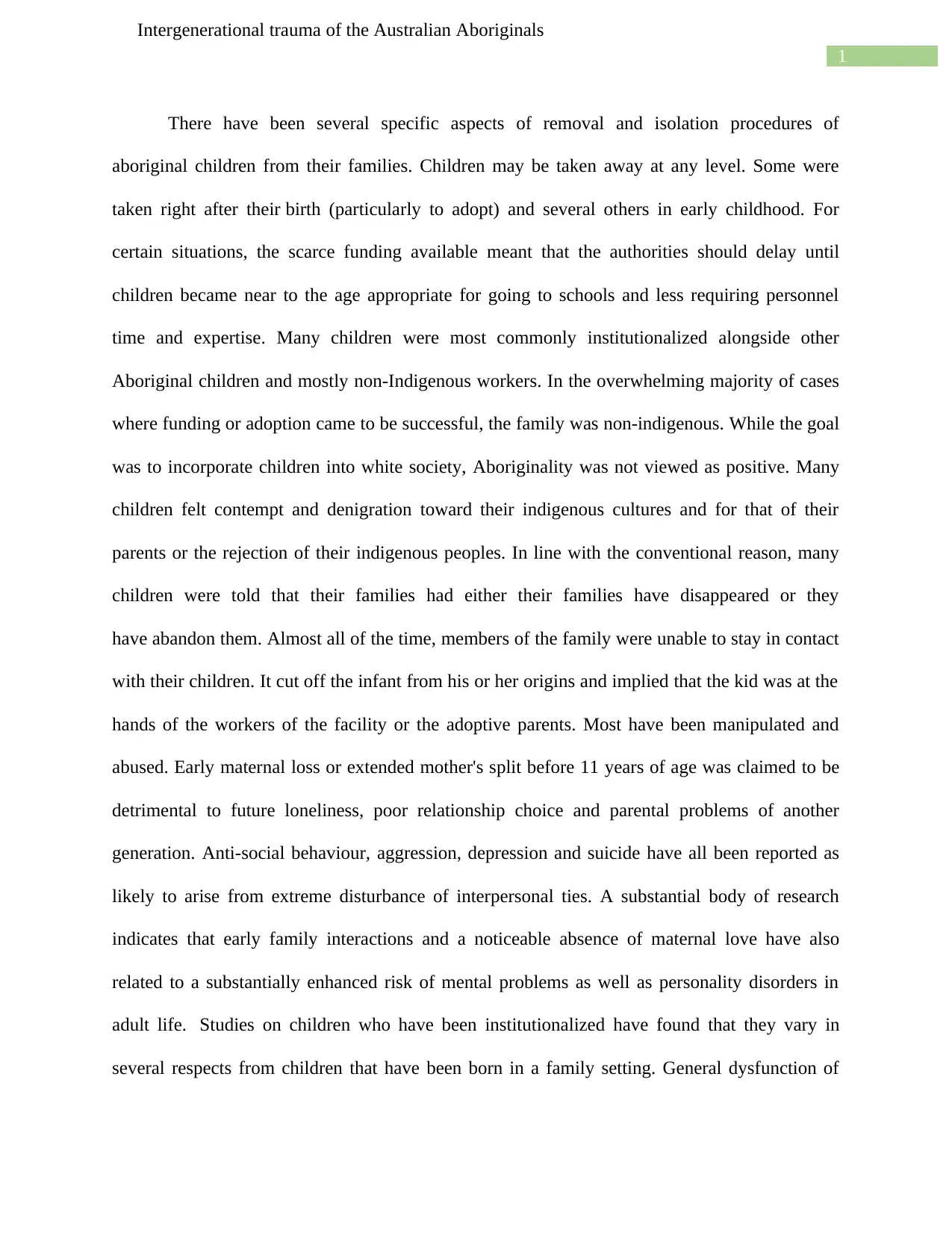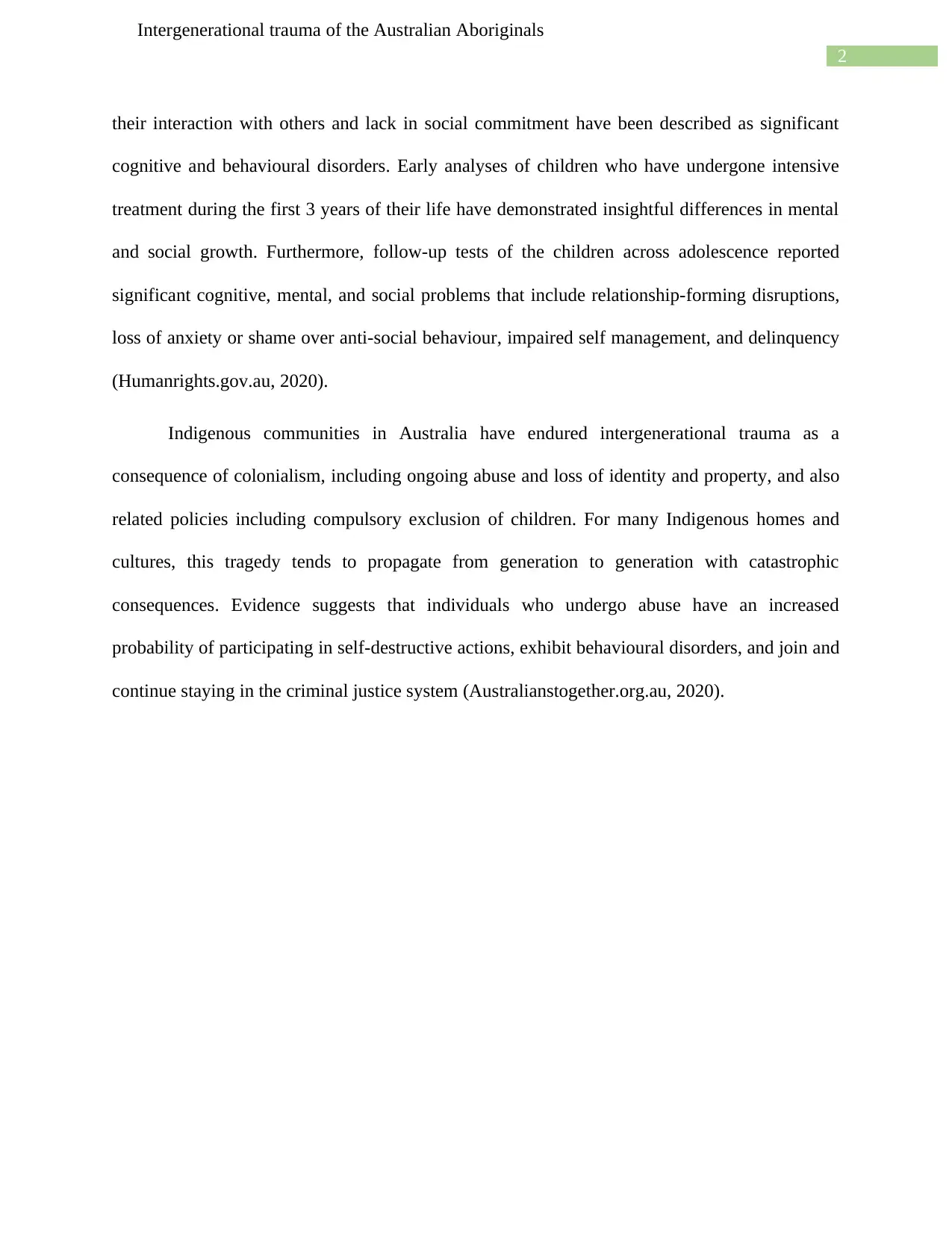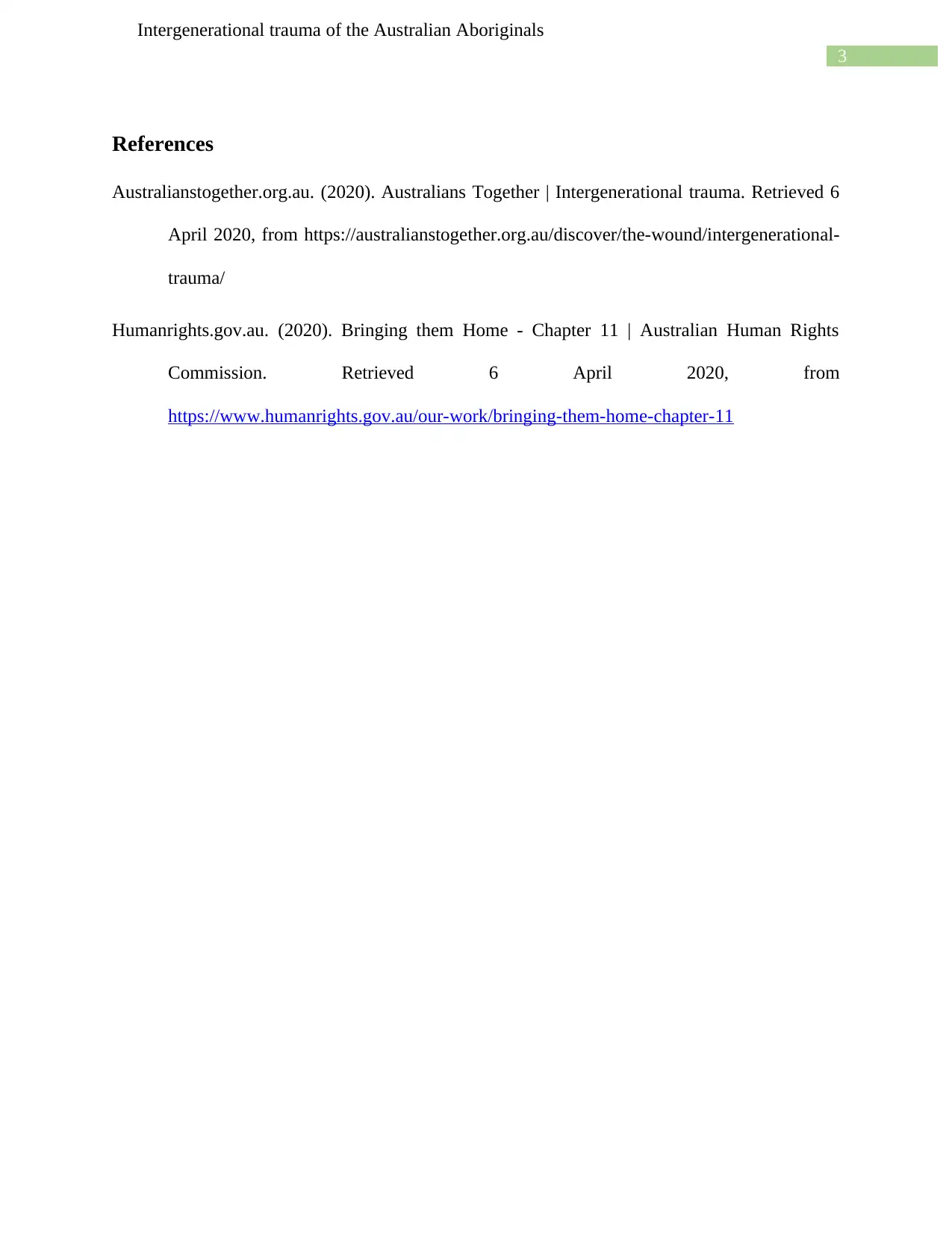Analysis of Intergenerational Trauma among Aboriginal Australians
VerifiedAdded on 2022/09/14
|4
|623
|14
Essay
AI Summary
This essay delves into the intergenerational trauma suffered by Aboriginal Australians, stemming from historical events such as colonialism, forced child removal, and policies designed to assimilate Indigenous populations. It explores the lasting consequences of these actions, including the loss of cultural identity, the breakdown of family structures, and the resulting mental health challenges. The essay highlights how these traumas are passed down through generations, impacting Indigenous communities. It examines the impact of policies that separated children from their families, leading to feelings of rejection, abuse, and detachment from their heritage. The essay references several sources to support its claims, including studies on the effects of institutionalization and maternal loss on child development, and the long-term effects on the Aboriginal community. This essay provides a comprehensive understanding of the subject and its impact.
1 out of 4











![[object Object]](/_next/static/media/star-bottom.7253800d.svg)